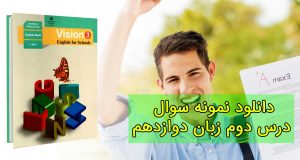به سایت آموزشی رامین توحیدی خوش آمدید. در این مطلب مقاله انگلیسی درباره مکتب با ترجمه را برای شما آماده کرده و آن را ترجمه نموده ام. این متن انگلیسی درباره مکتب از این سایت کپی شده است.
Maktab is an Arabic word meaning elementary schools. Though it was primarily used for teaching children in reading, writing, grammar and Islamic subjects (such as Qur’an recitations), other practical and theoretical subjects were also often taught. Until the 20th century, maktabs were the only means of mass education in much of the Islamic world.
While in Arabic, Maktab refers to only elementary school, the word Maktab is also used in Persian language in Afghanistan and is an equivalent term to school, comprising both the primary and secondary schooling. Ibn Sina also used the word Matkab in the same sense.
In the medieval Islamic world, an elementary school was known as a maktab, which dates back to at least the 10th century. Like madrasahs (which referred to higher education), a maktab was often attached to a mosque.
In the 11th century, the famous Persian Islamic philosopher and teacher, Ibn Sina, in one of his books, wrote a chapter dealing with the maktab entitled “The Role of the Teacher in the Training and Upbringing of Children”, as a guide to teachers working at maktab schools. He wrote that children can learn better if taught in classes instead of individual tuition from private tutors, and he gave a number of reasons for why this is the case, citing the value of competition and emulation among pupils as well as the usefulness of group discussions and debates. Ibn Sina described the curriculum of a maktab school in some detail, describing the curricula for two stages of education in a maktab school.Primary education
Ibn Sina wrote that children should be sent to a maktab school from the age of 6 and be taught primary education until they reach the age of 14. During which time, he wrote that they should be taught the Qur’an, Islamic metaphysics, language, literature, Islamic ethics, and manual skills (which could refer to a variety of practical skills).
Secondary education
Ibn Sina refers to the secondary education stage of maktab schooling as the period of specialization, when pupils should begin to acquire manual skills, regardless of their social status. He writes that children after the age of 14 should be given a choice to choose and specialize in subjects they have an interest in, whether it was reading, manual skills, literature, preaching, medicine, geometry, trade and commerce, craftsmanship, or any other subject or profession they would be interested in pursuing for a future career. He wrote that this was a transitional stage and that there needs to be flexibility regarding the age in which pupils graduate, as the student’s emotional development and chosen subjects need to be taken into account.
Literacy
In medieval times, the Caliphate experienced a growth in literacy, having the highest literacy rate of the Middle Ages, comparable to classical Athens’ literacy in antiquity. The emergence of the Maktab and Madrasah institutions played a fundamental role in the relatively high literacy rates of the medieval Islamic world.
مکتب چیست؟
مکتب واژه ای عربی به معنای مدارس ابتدایی است، اگرچه این واژه عمدتاً برای آموزش خواندن، نوشتن، صرف و نحو و دروس اسلامی (مانند قرائت قرآن) به کودکان استفاده می شد، اما دروس عملی و نظری دیگر نیز اغلب تدریس می شد. تا قرن بیستم مکتب تنها وسیله آموزش جمعی در بیشتر کشورهای جهان اسلام بود.
هم اکنون می توانید ترجمه کامل مقاله انگلیسی درباره مکتب را در قالب یک فایل PDF زیبا (بدون تبلیغات) دانلود نمایید.
قیمت: 5000 تومان


















